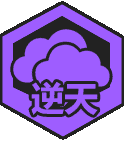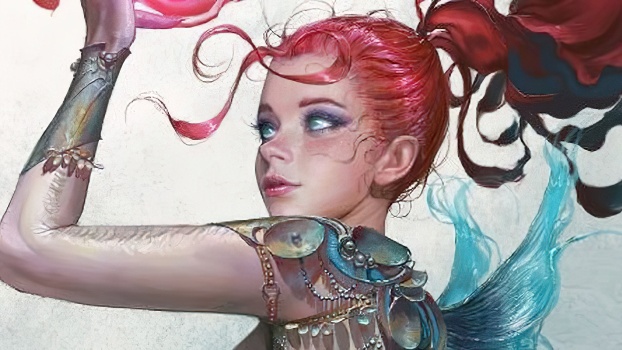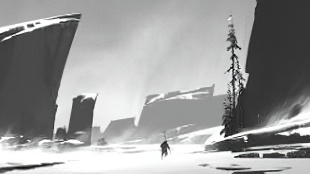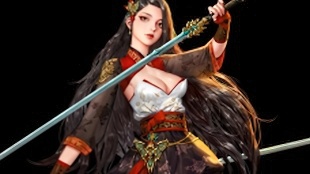您需要 登录 才可以下载或查看,没有账号?注册

x
 [翻译] : Sorry!Error [翻译] : Sorry!Error
本帖最后由 qq_微愿_kzk 于 2022-6-18 04:30 编辑
-授权微元素发布-https://www.artstation.com/pzielinski
I had the pleasure to write two articles/breakdowns about my last project.
First a few months ago for 80.lv about my Danish book that you can find here :
Piotr Zielinski talked about making an ancient book in ZBrush, explained the texturing method, and discussed the advantages of Marmoset Toolbag.
Piotr Zielinski 谈到了用 ZBrush 制作一本古书,解释了纹理方法,并讨论了 Marmoset Toolbag 的优点。
IntroductionHi, I’m Piotr Zieliński and I’m a Character Artist from Cracow. Generally, I’m self-taught and I know most of the modeling stuff from YouTube tutorials, but since August 2019 I’m a member of Georgian Avasilcutei’s mentorship program. Currently, I work in Flying Wild Hog as a Character Artist, before that I worked on a small indie VR project.
介绍嗨,我是 Piotr Zieliński,是来自克拉科夫的角色艺术家。一般来说,我是自学成才的,我知道 YouTube 教程中的大部分建模内容,但自 2019 年 8 月以来,我是 Georgian Avasilcutei 导师计划的成员。目前,我在 Flying Wild Hog 担任角色艺术家,在此之前我从事过一个小型独立 VR 项目。
The Danish Book ProjectMy Danish Book project started as a part of the whole character that I’m doing for my portfolio – a concept of a knight girl who holds a book. While I started working on a character, Georgian was doing his fantasy book set, and if I remember correctly I just saw the Danish one while he was looking for references. His work was a quality benchmark, but the main goal for me was to do something more complicated than him, so when the time came for doing my book, I already knew what I was looking for. I didn’t have to spend too much time on Pinterest before I found it. It turned out Pinterest pictures lead to the whole album published by the National Library of Sweden on Flickr with great quality and multiple angles of the piece – that helped me a lot with all those patterns, the book has because I wouldn’t be able to just figure them out from one 3/4 shot. 我的丹麦书项目开始是我为我的作品集所做的整个角色的一部分——一个拿着书的骑士女孩的概念。当我开始创作一个角色时,Georgian 正在做他的 奇幻书集,如果我没记错的话,我只是在他寻找参考资料时看到了丹麦语的。他的作品是一个质量基准,但我的主要目标是做一些比他更复杂的事情,所以当我写书的时候,我已经知道我在寻找什么。在我找到 Pinterest 之前,我不必花太多时间在 Pinterest 上。 事实证明,Pinterest 图片导致了 瑞典国家图书馆在 Flickr 上出版的整张专辑,质量上乘,作品多角度——这对我的所有这些模式帮助很大,这本书有,因为我无法做到只需从一个 3/4 的镜头中找出它们。
Modeling the Asset and Creating the OrnamentsAs I mentioned before, reference pictures were great and taken from different angles, so I was able to put them into 3ds Max and overlay them with my models later to place everything in the right places. Before that, I just had to make sure they are more or less scaled the same. 为资产建模并创建装饰品正如我之前提到的,参考图片很棒,而且是从不同的角度拍摄的,所以我可以将它们放入 3ds Max 中,然后与我的模型叠加,以便将所有内容放置在正确的位置。在此之前,我只需要确保它们或多或少地缩放相同。 Covers I started with some basic poly modeling and when I was happy with the proportions I took everything to ZBrush for further adjustments. 盖子 我从一些基本的多边形建模开始,当我对比例感到满意时,我将所有东西带到 ZBrush 进行进一步调整。 What I did in ZBrush was pretty straightforward first I DynaMeshed all pieces together then ZRemeshed, SubDivided, projected the first two SubDiv levels, and then SubDivided further to be able to add more details on the edges. 我在 ZBrush 中所做的非常简单,首先我将所有部分动态网格化,然后 ZRemeshed、SubDivided、投影前两个 SubDiv 级别,然后进一步 SubDivided 以便能够在边缘添加更多细节。 While detailing I used Trim Dynamic and Dam Standard brushes to create a bit of edgewear and variation.
在进行细节处理时,我使用了 Trim Dynamic 和 Dam Standard 笔刷来创建一些边缘磨损和变化。
Then I focused on making more unique details, some of them I found on the ref pictures: 然后我专注于制作更多独特的细节,其中一些是我在参考图片上找到的: The others I just added by myself to have more interesting spots that I knew were going to bake well and add more information to the Curvature Map. 我自己添加的其他内容是为了有更多有趣的点,我知道这些点会很好地烘烤并向曲率图添加更多信息。 Hinges First I did a BaseMesh utilizing splines in 3ds Max: 铰链 首先,我在 3ds Max 中使用样条线做了一个 BaseMesh: - I traced the hinge's outline
- I used Extrude to added thickness to it
- Symmetry to the other side
- I Quadified the mesh and added a chamfer on the edges to make sure they stay in place after DynaMeshing in ZBrush.
After this, I took them to ZBrush and did the same process as on the covers in addition to breaking the symmetry I applied before. There is one detail appearing on both the cover and the hinges – "scales like tubes" placed around the covers and on the bottom of hinges. When I started analyzing it I realized there was a spiral pattern appearing so what I did was: - 我追踪了铰链的轮廓
- 我使用挤压来增加它的厚度
- 另一边对称
- 我对网格进行了四边形化,并在边缘上添加了一个倒角,以确保它们在 ZBrush 中的 DynaMeshing 之后保持在原位。
在此之后,我将它们带到 ZBrush 并做了与封面相同的过程,除了打破我之前应用的对称性。 盖子和铰链上都出现了一个细节——“像管子一样的鳞片”放置在盖子周围和铰链底部。当我开始分析它时,我意识到出现了一个螺旋图案,所以我所做的是:
- I made and duplicated with some offset a few spirals in 3ds Max
- I placed subdivided box along them to fill all space pretty evenly
- I took some small part with the repeating pattern
- I took this pattern and placed them around the cover using splines and spacing tool in 3ds Max
- took everything to ZBrush, DynaMeshed together, and sculpted a bit on top to add some variation and lose seams from duplicating not ideally seamless mesh.
I’m aware that what I got was not ideally identical to the reference pictures but I decided that it was good enough for me to move further. Patterns Almost all pattern pieces are placed with splines in an orthographic view. I used Radial Mesh for all those snail-like ones and rectangular mesh for the rest. - 我在 3ds Max 中制作并复制了一些偏移量的螺旋
- 我沿着它们放置了细分框,以均匀地填充所有空间
- 我用重复模式做了一小部分
- 我采用了这个图案并使用 3ds Max 中的样条线和间距工具将它们放置在封面周围
- 将所有东西都带到 ZBrush,DynaMeshed 一起,并在顶部雕刻一点以添加一些变化并因复制不理想的无缝网格而失去接缝。
我知道我得到的与参考图片并不完全一致,但我认为这足以让我走得更远。 模式 在正交视图中,几乎所有样片都使用样条线放置。我对所有那些蜗牛状的网格使用径向网格,其余的使用矩形网格。
To be honest, there was nothing too complicated, just tedious and boring actions. I PolyModeled the pieces and used them around the whole cover because they were appearing in some other places as well: 老实说,没有什么太复杂的事情,只是乏味无聊的动作。我对这些作品进行了 PolyModel 化并在整个封面上使用它们,因为它们也出现在其他一些地方: Because I placed all the patterns in the orthographic view, the spine pattern needed to be bend to fit into its place nicely. To do that, I detached faces from the back of the spine cover, you can use the By Angle option to make it fast if you have more divisions than I had. 因为我将所有图案都放置在正交视图中,所以脊柱图案需要弯曲才能很好地适应它的位置。为此,我从书脊封面的背面分离了面,如果您有比我更多的分区,您可以使用按角度选项使其更快。
The next step was to straighten the piece and scale it up so it covers the whole pattern nicely. 下一步是拉直这块并按比例放大,这样它就可以很好地覆盖整个图案。
Afterward, I utilized the combined power of Morpher and Skin Wrap Modifier to bend the whole pattern to the correct position, just remember to: 之后,我利用 Morpher 和 Skin Wrap Modifier 的组合力量将整个图案弯曲到正确的位置,请记住: - put edit poly on top of the splines, otherwise, they will start taking the bending into consideration and will start twisting.
- select face deformation instead of a vertex by default and select weight all points to get the best result.
Once I had everything in place I put a double TurboSmooth on top of all patterns and exported everything to ZBrush. Detailing the patterns was very subtle since they are once big detail in itself just a bit of edgewear with Trim Dynamic. - 将编辑多边形放在样条线的顶部,否则,它们将开始考虑弯曲并开始扭曲。
- 默认选择面变形而不是顶点,并选择权重所有点以获得最佳结果。
一切就绪后,我将双 TurboSmooth 放在所有图案之上,然后将所有内容导出到 ZBrush。细节的图案非常微妙,因为它们本身曾经是一个大细节,只是带有 Trim Dynamic 的一点边缘磨损。
The last thing left about patterns is those thin "snail" details. The problem was they were just tubes and I needed this twisted detail – I used Displacement for that. For the Displacement to work, I first needed to have UVs. I used RizomUV to make them. Utilizing its strengths, it was a very fast process. What I did was:
关于图案的最后一件事是那些薄薄的“蜗牛”细节。问题是它们只是管子,我需要这种扭曲的细节——为此我使用了 Displacement。为了让 Displacement 起作用,我首先需要有 UV。我使用 RizomUV 制作它们。利用它的优势,这是一个非常快速的过程。我所做的是:
- I imported all wires to Rizom with a bridge for 3ds Max
- I used Auto Select Edges with default settings to select all cut lines
- I unwrapped everything and used the Rectangularize Polygons Vertical button to make all of them straight
- I selected one cap and used TopoCopy to stack all caps on top of each other so I can move them away
- I inverted the selection and used align tools to place all wires in the same position
- At last, I went back to 3ds Max and scaled the UVs, so the pattern I prepared before was big enough.
Displacement texture was a simple stripes tileable pattern with a 50% grey color for the caps I stacked before so they didn’t deform. - 我使用 3ds Max 的桥将所有电线导入 Rizom
- 我使用默认设置的自动选择边缘来选择所有切割线
- 我打开所有东西并使用 Rectangularize Polygons Vertical 按钮使它们都变直
- 我选择了一个帽子并使用 TopoCopy 将所有帽子堆叠在一起,这样我就可以将它们移开
- 我反转选择并使用对齐工具将所有电线放置在同一位置
- 最后,我回到 3ds Max 并缩放了 UV,所以我之前准备的图案足够大。
置换纹理是一个简单的条纹平铺图案,我之前堆叠的盖子使用了 50% 的灰色,因此它们不会变形。
Lastly, I imported wires to ZBrush (sending them as .fbx format will import the texture as well if you had it applied in your 3D application). Then just had to subdivide them a few times and apply the displacement, I also added a bit of Inflate afterward to get a better result. Pages I started with stacking on top of a lot of planes on top of each other with a shell modifier. Then I pushed the ref planes a bit inside them so I could see what I was doing and moved each by hand with a soft selection to match the silhouettes from the refs on both sides 最后,我将线导入到 ZBrush(如果将它们应用到 3D 应用程序中,将它们以 .fbx 格式发送也会导入纹理)。然后只需将它们细分几次并应用位移,之后我还添加了一些 Inflate 以获得更好的结果。 页面 我开始使用壳修饰符将许多平面堆叠在彼此之上。然后我将参考平面稍微推到它们里面,这样我就可以看到我在做什么,并通过软选择手动移动每个参考平面,以匹配两侧参考平面的轮廓
Note that the thickness of the pages is a bit exaggerated. Because I was doing a real-time asset, I knew that I won’t be able to support that thin details to actually make pages with an accurate thickness. Then I took them to ZBrush for some sculpting. Pretty fast I realized that I can’t really subdivide as much as I want due to way too high a polycount. What I did to solve this was isolating the region inside the pages. I knew is not going to need any sculpting masked it out and on top of the mask subdivided – this way I had more resolution only around the pages exactly where I needed it. 请注意,页面的厚度有点夸张。因为我正在做一个实时资产,我知道我将无法支持那些薄的细节来实际制作具有准确厚度的页面。 然后我把它们带到 ZBrush 进行一些雕刻。很快我意识到由于多数太高,我不能真正细分我想要的那么多。我为解决这个问题所做的就是隔离页面内的区域。我知道不需要任何雕刻将其遮盖并在细分的蒙版之上 - 这样我只有在我需要它的页面周围才有更高的分辨率。 First, I did all those non-uniform details, pages that stick out a bit some that got folded, and general non-uniformity on the surface. I used Move Topological for this so I could easily select and move particular pages not affecting the rest at the same time By default, ZBrush doesn’t have viewport antialiasing and while working with objects similar to book pages it might be hard to see what is going on. I found a solution to this - what you need to do is:
I did the floral pattern on the side of the pages by masking it out using the whole ZBrush window see-through, then I deflated and sculpted it on top.
我通过使用整个 ZBrush 透明窗口将其遮盖在页面侧面制作花卉图案,然后放气并在顶部雕刻。
Finally, I added those square-like details on top: 最后,我在顶部添加了这些方形细节: I wasn’t super accurate with them, but again I was aware they would not be visible without using too many texture sets, so I decided to exaggerate them a bit so they can show off a bit easier on the bakes. I handled page opening with Bend Curve Deformer in ZBrush, an idea I peeked from Georgian’s books streams. 我对它们不是很准确,但我再次意识到如果不使用太多纹理集,它们将不可见,所以我决定稍微夸大它们,以便它们在烘焙时更容易炫耀。 我在 ZBrush 中使用 Bend Curve Deformer 处理页面打开,这是我从 Georgian 的书籍流中偷窥的一个想法。 TexturingFirst, I gathered some references with old paper pages, I felt they would work well with my book – yellow-ish with some visible dirt and stain marks. 纹理首先,我收集了一些旧纸页的参考资料,我觉得它们很适合我的书——黄色,带有一些明显的污垢和污渍。 - I started with overlaying Paper Old and Paper Vellum materials from the Marmoset Library to have a base
- Then added Paper Stained layers to have some stain details here and there
- On top of that, I added dirt layers.
For the text, I googled some close-up photos of some old books with nice colorful ink decorations that I liked and used them as a texture for my pages. I plugged them into texture input in my layers, first positioning them by hand to fit the page space well: For Albedo, I just used overlay blending mode and put a white multiplier because by default it took the average color from the texture and was yellow-ish. - 我从 Marmoset Library 中的 Paper Old 和 Paper Vellum 材料开始叠加,以获得基础
- 然后添加 Paper Stained 图层以在这里和那里有一些污渍细节
- 最重要的是,我添加了污垢层。
对于文本,我在谷歌上搜索了一些旧书的特写照片,这些旧书带有我喜欢的漂亮的彩色墨水装饰,并将它们用作我页面的纹理。 我将它们插入到我的图层中的纹理输入中,首先手动定位它们以很好地适应页面空间: - 对于 Albedo,我只使用了叠加混合模式并放置了一个白色乘数,因为默认情况下它从纹理中获取平均颜色并且是黄色的。
For Roughness, I used Linear Burn blending mode and tweaked Roughness value and contrast to achieve the result I like.
- 对于粗糙度,我使用了线性加深混合模式并调整了粗糙度值和对比度以获得我喜欢的结果。
For Metalness, I used standard blending but inverted the values to have a metallic finish on the text and adjusted the metalness value for my liking.
- 对于金属度,我使用标准混合,但反转值以在文本上具有金属质感,并根据自己的喜好调整金属度值。
Border 边界 For the border: - I started with Bronze Rough material.
- I added some layers for color variation.
- Then utilizing a Curvature Map, I tried to emphasize the depth a bit more.
- Then I added some color correction and started painting manually areas that on the references were lighter.
- Then I manually added some dirt to match the references better.
- Finally, I added a layer to increase the saturation a bit and reduce the contrast so the pages won’t create too much noise from the distance.
Covers The most important thing to achieve good looking and having nice depth patterns on the textures was parallax that utilized a Height Map baked into planes from the high poly. Without it, those are just flat surfaces with opacity that are not looking appealing at all. 对于边界: - 我从青铜粗糙材料开始。
- 我为颜色变化添加了一些图层。
- 然后利用曲率贴图,我试图更多地强调深度。
- 然后我添加了一些颜色校正并开始手动绘制参考上较亮的区域。
- 然后我手动添加了一些污垢以更好地匹配参考。
- 最后,我添加了一个图层来稍微增加饱和度并降低​​对比度,这样页面就不会从远处产生太多噪音。
盖子 要在纹理上获得漂亮的外观和良好的深度图案,最重要的是视差,它利用高度贴图从高模烘焙到平面中。没有它,这些只是不透明的平面,看起来一点也不吸引人。
Workflow in Marmoset ToolbagWell, first of all, Texturing in Marmoset 4 is great, and I totally recommend it to everybody to at least try if they are skeptical for some reason. I could just stop right there but let me dig a bit dipper, I would like to point out a few Marmoset 4 features that I’m enjoying the most so far: You are texturing in real-time, so what you see is what you get finally, there is no need for constant exporting from, for example, Substance to check how colors and roughness actually look in the engine. Painting even in 4k is super fast and fluent and if you stack too many layers on top and it gets slower there is the fast viewport option that in exchange for a bit slower layer switching allows you to paint fluently in almost any case. Marmoset Toolbag 中的工作流程嗯,首先,Marmoset 4 中的纹理非常棒,如果他们出于某种原因持怀疑态度,我完全推荐给大家至少尝试一下。我可以停在那里,但让我挖一点北斗,我想指出一些迄今为止我最喜欢的 Marmoset 4 功能: - 您正在实时进行纹理处理,因此您所看到的就是最终得到的结果,不需要不断地从 Substance 导出来检查颜色和粗糙度在引擎中的实际外观。
- 即使在 4k 中绘画也非常快速和流畅,如果您在顶部堆叠太多图层并且速度变慢,则可以使用快速视口选项来换取较慢的图层切换,让您几乎在任何情况下都可以流畅地绘画。
You can stack layers and, what is even cooler, layer masks on top of each other in a way that only affects one mask layer not the whole stack below them so you can have multiple paint layers affected by Grunge Maps dedicated to them and everything on just one mask stack. - 您可以堆叠图层,甚至更酷的是,图层蒙版彼此叠加,仅影​​响一个蒙版图层而不影响其下方的整个堆栈,因此您可以拥有多个受专用于它们的 Grunge Maps 影响的油漆层以及所有内容只有一个面具堆栈。
Wand Select and Gradient Tool. These were kind of hard to show with the book, so I used a part of the armor for my upcoming character. - It is not really a software functionality, but guys from Marmoset have a Discord server where we can complain about whatever issues we find and they actually take some time and answer those questions.
Obviously, nothing is perfect, and there a few things I would love to see implemented in future updates: - for now, there isn’t any function similar to the one from the Substance that allows you to reload the mesh with different UVs and that will keep all your brush strokes, so you just have to be certain that what you import for texturing won’t change or you will lose information from paint layers.
- there are not many materials in the library especially speaking about fabrics were compared to a Substance it is just a fracture of the size, but I’m sure this will change and I see they are adding some new materials from time to time so we just need to give them some time I guess.
- it would be great to have autosave implemented, even though Marmoset is very stable it always hurts when you get your work lost because you forgot to save.
- and guys, we need that color picker, please.
Lighting and RenderingI started by choosing the right sky for me, I wanted something with good contrast, so my metal ornaments would shine nicely. I also wanted to have light sources from different directions – I have chosen City Hall Balcony. First I added directional lights in the places where the light sources are on the sky to enhance the sky. Just note that I increased the child-light brightness to 4. Then added fill spotlight and the main source from the top to lighten the book better The last thing I added was fog to match my background color with the burgundy table cloth I made for the presentation. - 首先,我在光源位于天空的地方添加了定向灯以增强天空。请注意,我将儿童灯亮度增加到 4。
- 然后从顶部添加填充聚光灯和主要来源以更好地照亮书本
- 我添加的最后一件事是雾,以使我的背景颜色与我为演示文稿制作的酒红色桌布相匹配。
I haven’t used any post-production settings except for the Hejl tone mapper on all cameras. I generally use this setup for everything I do in Marmoset because it makes my colors look better, and I have more contrast than with linear mapping. 除了所有相机上的 Hejl 色调映射器外,我没有使用任何后期制作设置。我通常将这个设置用于我在 Marmoset 中所做的所有事情,因为它使我的颜色看起来更好,而且我比线性映射有更多的对比度。 ConclusionThis project went relatively fast for me, compared to portfolio characters that usually take few months to finish. The whole thing took a week for high poly, about two weeks of after-hours retopology since there was a lot of tedious parts (such as open pages) and I was a bit lazy about it, to be honest, and about a week (full time) for texturing and the whole presentation. The main challenge during this project was to not get overwhelmed by all those pattern details on the covers and pages that you can see looking at the reference pictures for the first time. The solution was to take it slow, break it into smaller parts, and put everything together one by one. My advice for making such a prop would be to find one that has a lot of references because it makes life way easier and lets you focus on modeling/texturing. Once you have that, take it slow and make it as good as you can. Don’t rush it, there is no point in choosing a complicated asset and just failing to deliver because you were too impatient to finish it properly. The last thing, as Georgian once said: "If you want to make a portfolio piece choose something that people will be asking themselves, how the hell did he/she do it?, not another AK-47 or a radio station that even if done really well can get overlooked because it is just another copy of the same thing." I totally agree with that and I hope my book fulfills this rule.
Piotr Zielinski, 3D Character ArtistInterview conducted by Arti Sergeev结论与通常需要几个月才能完成的作品集角色相比,这个项目对我来说相对较快。整个过程花了一周的时间进行高多边形,大约两周的下班后重新拓扑,因为有很多乏味的部分(例如打开的页面),老实说,我对此有点懒惰,大约一周(全职)用于纹理和整个演示。 这个项目的主要挑战是不要被封面和页面上的所有图案细节所淹没,你可以第一次看到参考图片。解决办法是慢慢来,把它分解成更小的部分,然后把所有东西一个一个地放在一起。我对制作这样一个道具的建议是找到一个有很多参考资料的道具,因为它让生活变得更轻松,让你专注于建模/纹理。一旦你有了它,慢慢来,尽可能地让它变得更好。不要着急,选择复杂的资产并因为您太不耐烦而无法正确完成而未能交付是没有意义的。最后一件事,正如乔治亚恩曾经说过的那样:“如果你想制作一个作品集,请选择人们会问自己的东西,他/她到底是怎么做到的?,
Piotr Zielinski , 3D 角色艺术家Arti Sergeev进行的采访 | 




 [翻译] : Sorry!Error
[翻译] : Sorry!Error 

 评分
评分








